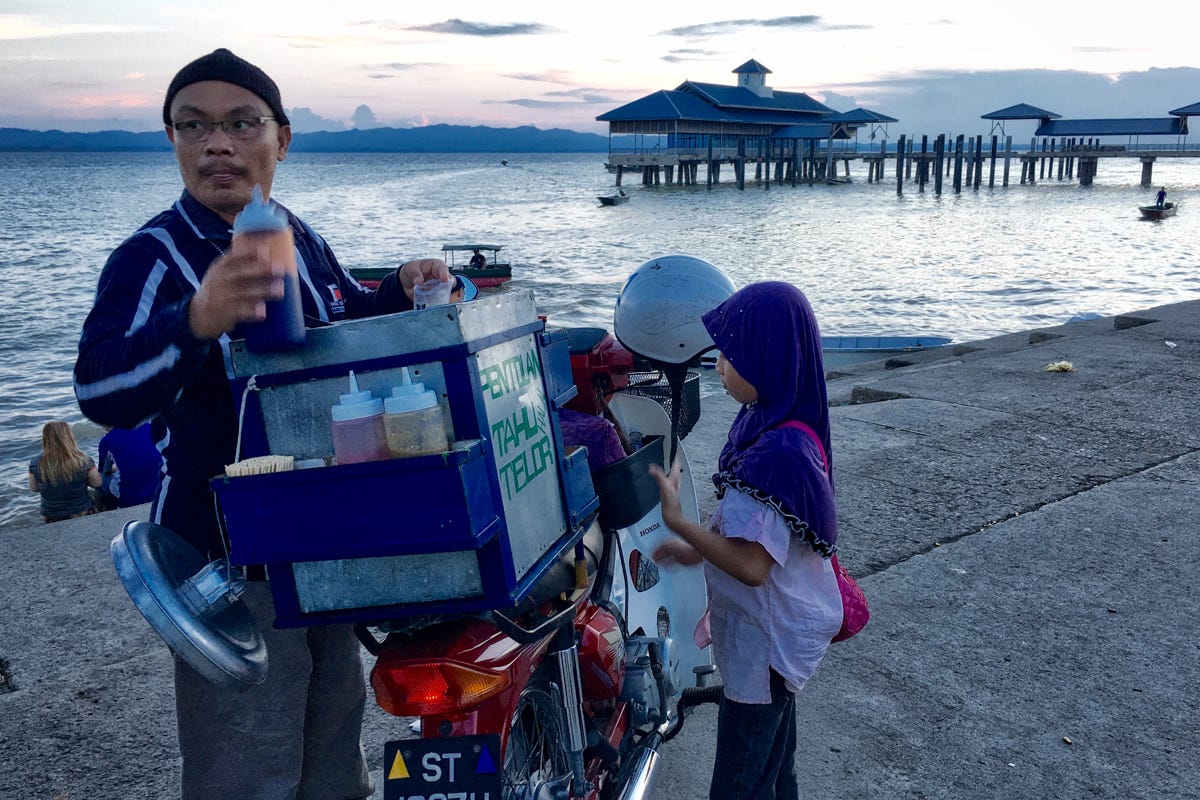The other day I gave a short talk to a travel organisation on lessons from Phuket’s Sandbox experiment. At one stage, I said short stay tourism will be the last segment to come back on stream. Today I’m going to expand on why this is an opportunity—not a cost, but it needs a change in governmental thinking.
By short stay tourism, I mean international weekenders and that sort of thing. People travelling from say Singapore, Kuala Lumpur or Perth to Bali for a weekend. Up until the advent of low-cost airlines, this sort of travel was the domain of the wealthy. Now though, or at least up until Covid washed in, in the words of AirAsia, “Everyone can fly”.
Just popping in for an afternoon surf. Photo: Stuart McDonald.
As I’ve written before, I don’t expect requirements like quarantine to be horizoned anytime soon. As such, short fly–in–weekenders will remain on the bench for the foreseeable future. What could come off the bench though, is long-stay tourism. In fact, as long as quarantine remains a thing, it is the only one that has a credible reason to get off the bench.
There is one problem—visas.
If you look at Southeast Asia pre-Covid, the longest standard tourist visa was Malaysia’s. The free single–entry visa available to many nationalities granted a stay of 90 days. For others like Cambodia, Indonesia, Laos and Vietnam, around 30 days was the gold standard. Yes, there were paid visas for longer stays, sometimes up to three months, but I’m sticking to broad strokes here. If you woke up Friday morning and wanted to go somewhere that day (who doesn’t feel like that on a Friday morning?) you were most likely looking at a 30-day visa.
Looking for more Southeast Asia newsletters?
Here are some of my favourites—all have a free version.
Cambodia: Campuccino by Darathtey Din
Singapore: We, The Citizens by Kirsten Han
Southeast Asia: Dari Mulut ke Mulut by Erin Cook
Thailand: Thai Island Times by David Luekens
Vietnam: Vietnam Weekly by Michael Tatarski
As long as quarantine is a thing, 30 days isn’t going to cut it. Who wants to spend half their allowed time in a country cooped up in a hotel? Destinations need to think big and toss this 30-day silliness.
More time please. Photo: Stuart McDonald.
Now is the time to begin work on six-month tourist visas. Every nation in Southeast Asia should have one. Here’s why.
Relieve pressure
While it may feel like 68 years, 2019 was less than two years ago. Overtourism headlines were dime a dozen with many poster children in Southeast Asia. Bali, Penang, Hoi An, Siem Reap and Ko Phi Phi were all featured repeatedly as examples of tourism gone mad.
While these destinations drowned in tourists, others withered on the vine. The reasons for this were many, and while low-cost flights stood out, another big one was the visa.
Spread that wealth
Studied through a monetary lens, 2019 tourism concentrated money where the tourists were. Duh. The logic here is not hard. The further afield tourists travel, the further the money spreads.
My fully furnished CBT homestay, Merente, Sumbawa. Community involvement is crucial. Photo: Stuart McDonald.
The more one travels off the beaten trail, the more their money lands in the hands of locals. This revenue not only helps smaller communities but also vests them in tourism’s upside. The added financial security created here is important. It is one thing to have a job in a hotel in a foreign– or off-island owned property in Bali, but it is something else altogether when it is your business, in your home town.
With more time permitted in–country, it is more likely foreign travellers will travel further afield. Sure some might just lay on the beach in Kuta or Ko Samui for six months, but not all will.
Some places take time to reach. Exploring the Lesser Sunda. Photo: Stuart McDonald.
Sticking with dosh for a moment, think of all the infrastructure built around tourism. Airports are the obvious ones, but there is plenty more. When someone visits for two nights, their average share of these costs is far higher than someone staying for two months.
Increase understanding
Regular readers will know though, that I’m not a fan of looking at tourism through this single lens. One of the biggest benefits I see in tourism, and one that is largely unmeasured, is the boost to cross-cultural understanding. Best of all this breaks both ways.
I come in peace. Alor. Photo: Stuart McDonald.
Not only does the traveller have the opportunity to develop a better understanding of the country they’re travelling in, but also locals can gain a better understanding of the traveller and where they are from.
I think it is safe to say that there’s plenty of scope for increasing understanding in both directions—and smartly done tourism can be a vehicle for exactly this.
Increase return rates
Of course, not all would want (or have the time and/or wealth) to spend six months in a single country. My experience though has been the more time I’ve spent in a country the more affinity for it I’ve developed.
Moreso, the longer I spend somewhere, the more I want to return. There is always something else to see, do, learn or experience. While this isn’t a one size fits all, who doesn’t want to look under the rug that little bit more?
Milk quarantine
As long as we’re stuck with quarantine, destinations are bonkers crazy not milking it. One example: If you’ve got a guest stuck in a hotel room for two weeks, give them access to a free online language class.
There is no shortage of aspects of any country that could be taught online—it isn’t like the guests have much to do—it is a captive audience. I say milk it.
What are the downsides?
The bed isn’t all roses sadly. Whenever I’ve suggested long visas in the past, a common reply is “people will use these visas to work illegally.” Yes, some would. So? That’s a matter for the immigration department.
Tourism sometimes goes wrong. Ko Phi Phi, Thailand. Photo: Stuart McDonald.
To not consider an approach like this, because of the few who would abuse it, seems a classic baby bathwater moment. If this concern is overriding, then consider limiting an applicant to one six month visa every two years.
Secondly, a long tourist visa policy should absolutely be 100% reciprocal. Sadly I don’t see this happening, and yes, it infuriates me just as much as it infuriates you. Using Australia as an example, just because that government has taken a complete conehead approach to visas doesn’t mean its neighbours should follow suit.
Lastly, you may have noticed up top where I wrote: “smartly done tourism”. Sadly all I need do is throw a satay stick off my back veranda to hit examples of tourism done not smartly. Particularly when it comes to remote areas, community involvement and cooperation are vital. If a community does not want foreigners traipsing through, then travel there should not be encouraged. There are many approaches to this issue, but regional examples of outreach done well do exist. A guiding hand is needed.
This is but a dream
I know that at the moment, Thailand aside, inbound for recreational travel is near impossible. One day this will change, as I’ve suggested, most likely in 2023, but now is the time to lay the groundwork on a longer stay tourist visa.
Give people the time to slow down and have a snack by the sea. Tawau, Malaysia. Photo: Sally Arnold.
Last but not least, I’d make the six-month visa free but charge for the one month one—but that is just me. If you want to go all wild and crazy, make it multiple entry.
Couchfish is 100 percent independent and reader-supported. If you’d like to show your support, become a paying subscriber today for just US$7 per month, or simply share this story with a friend. Thank you!




















Share this post